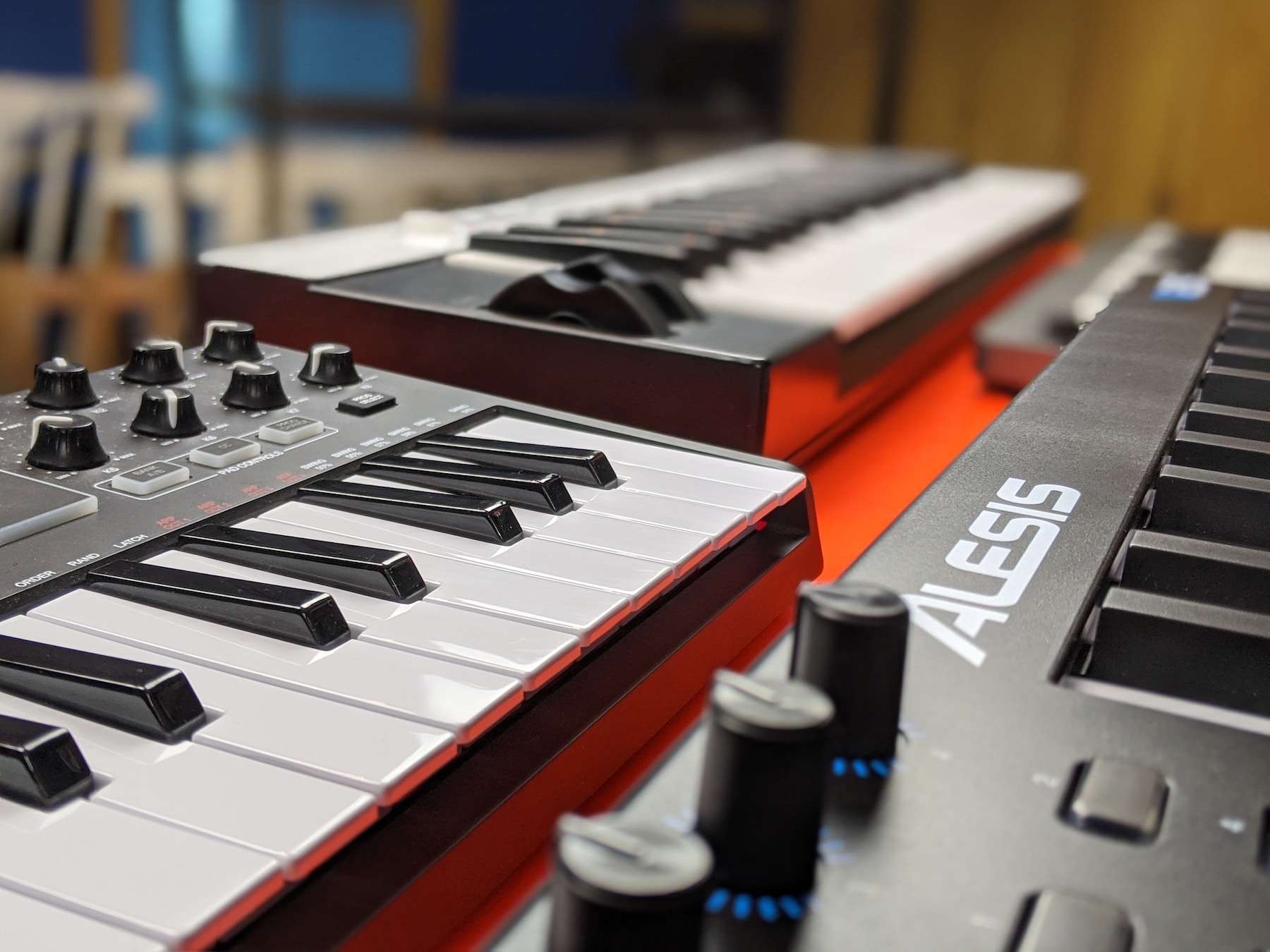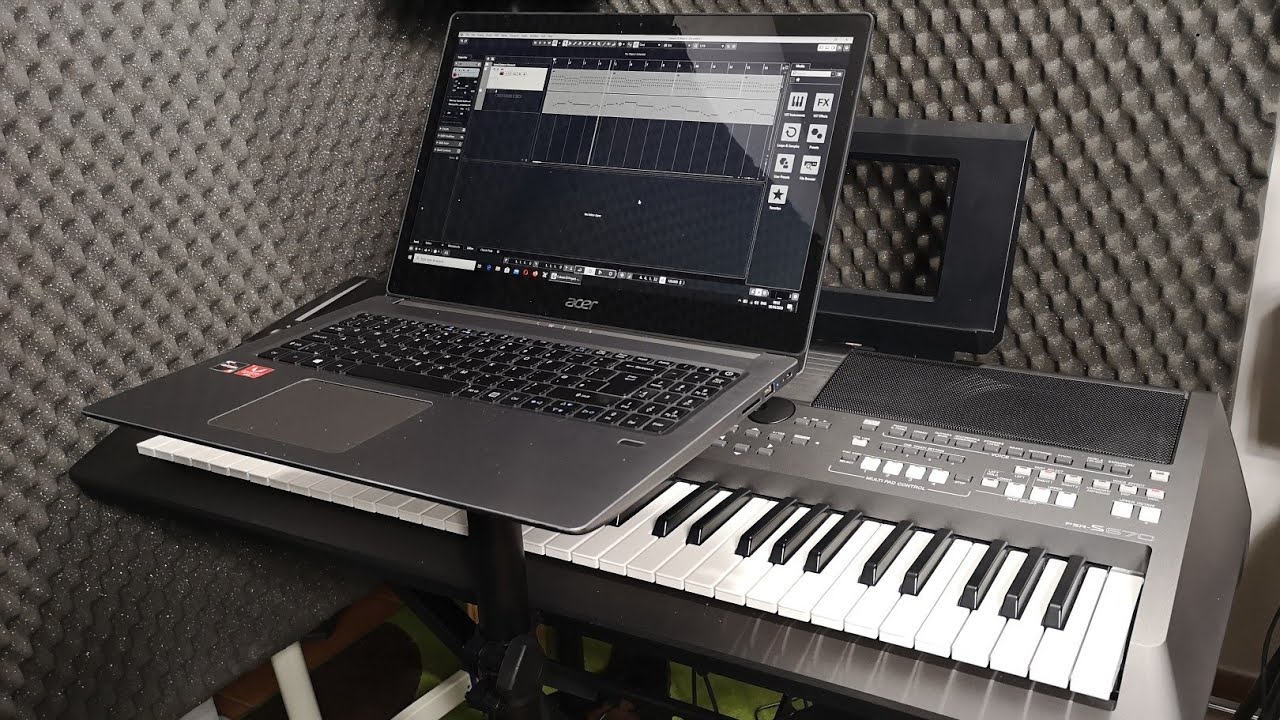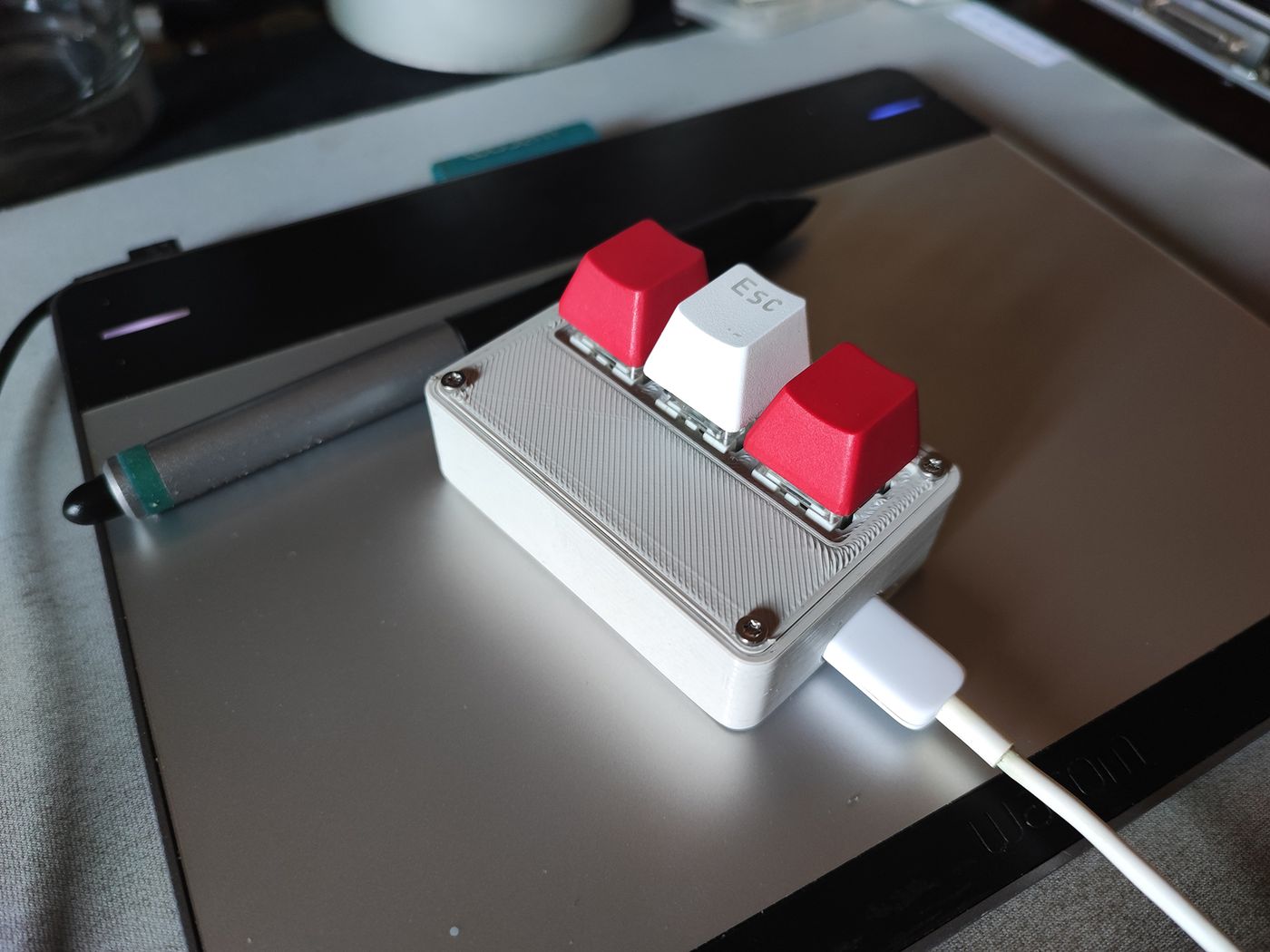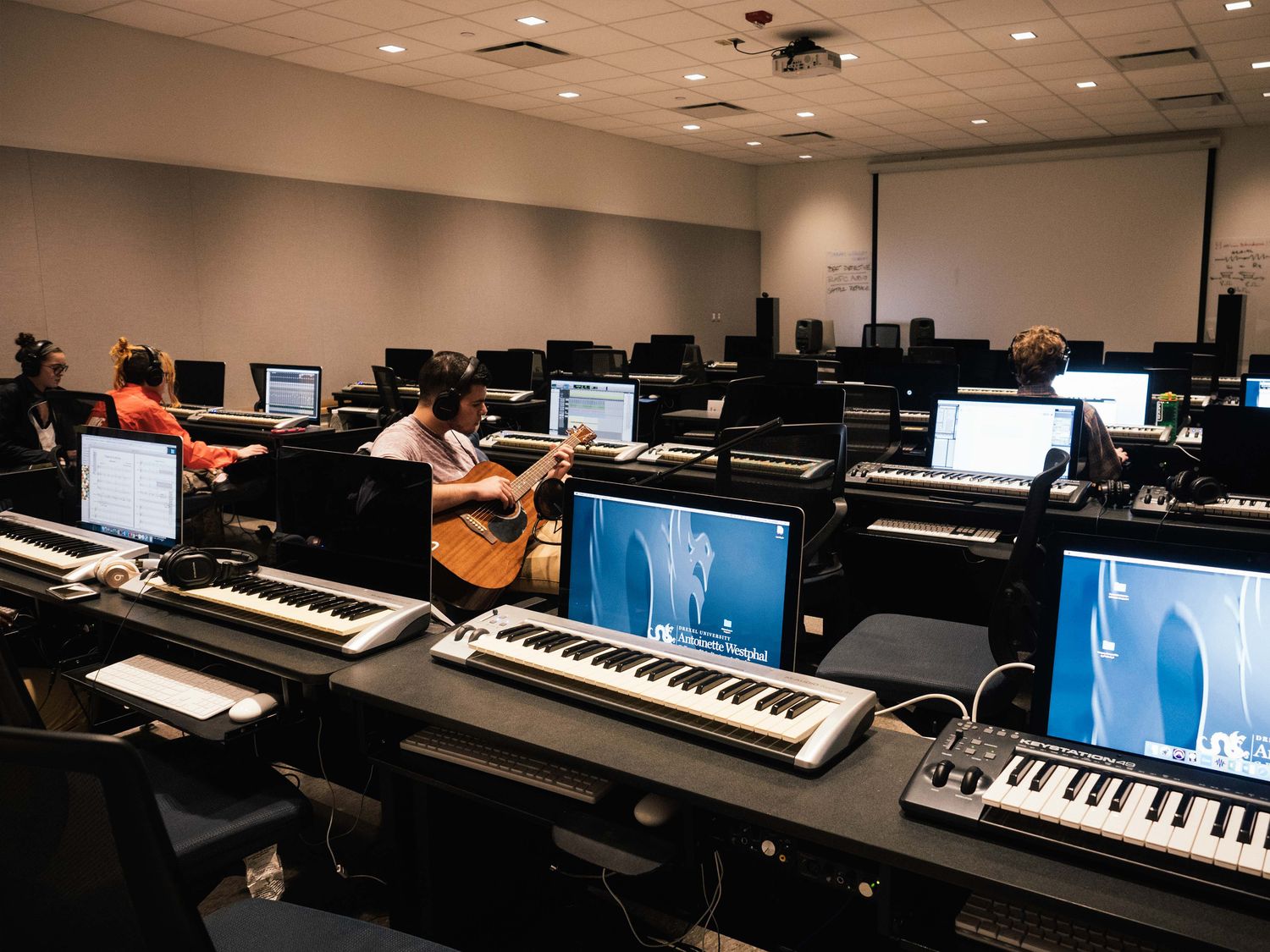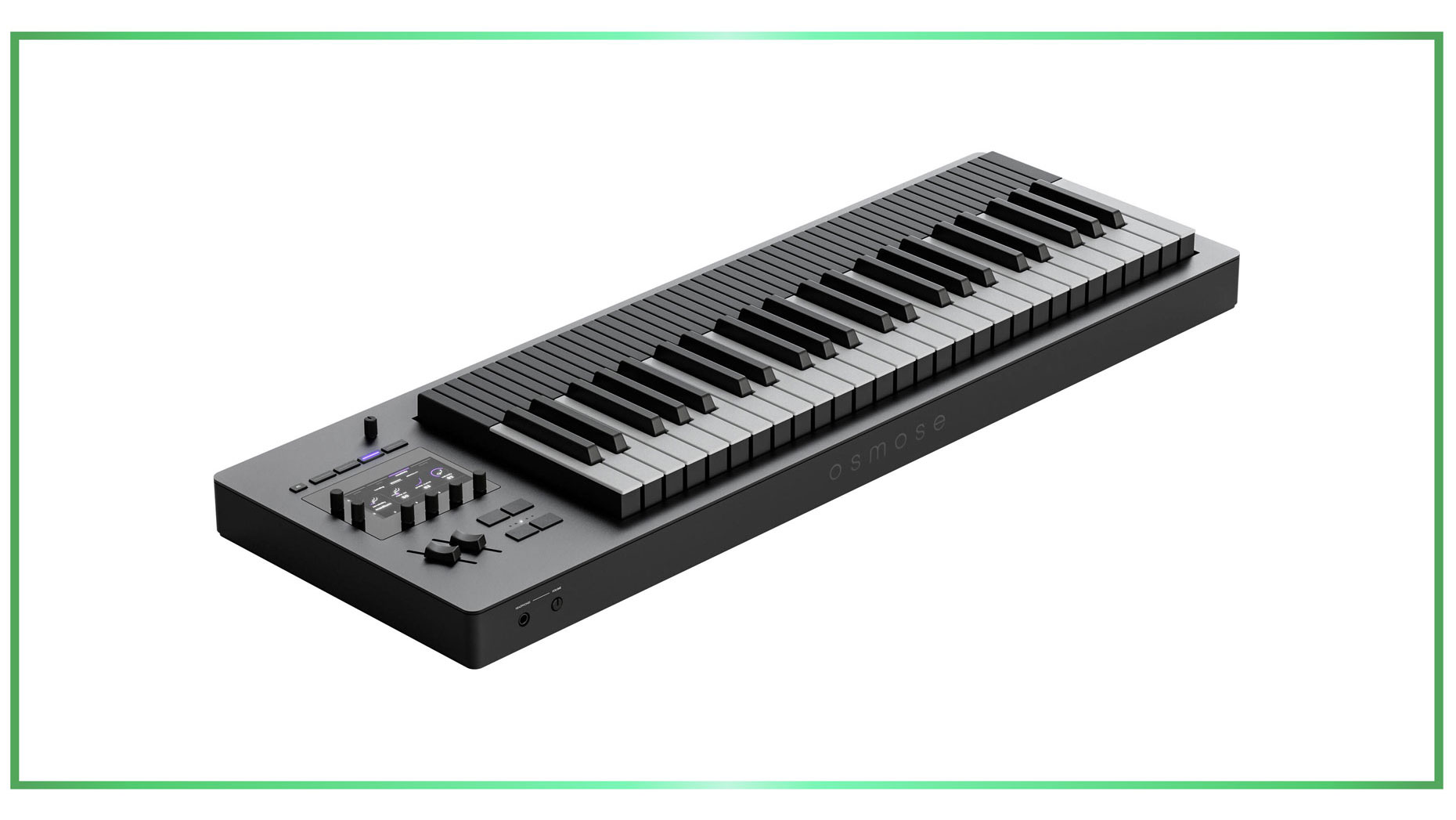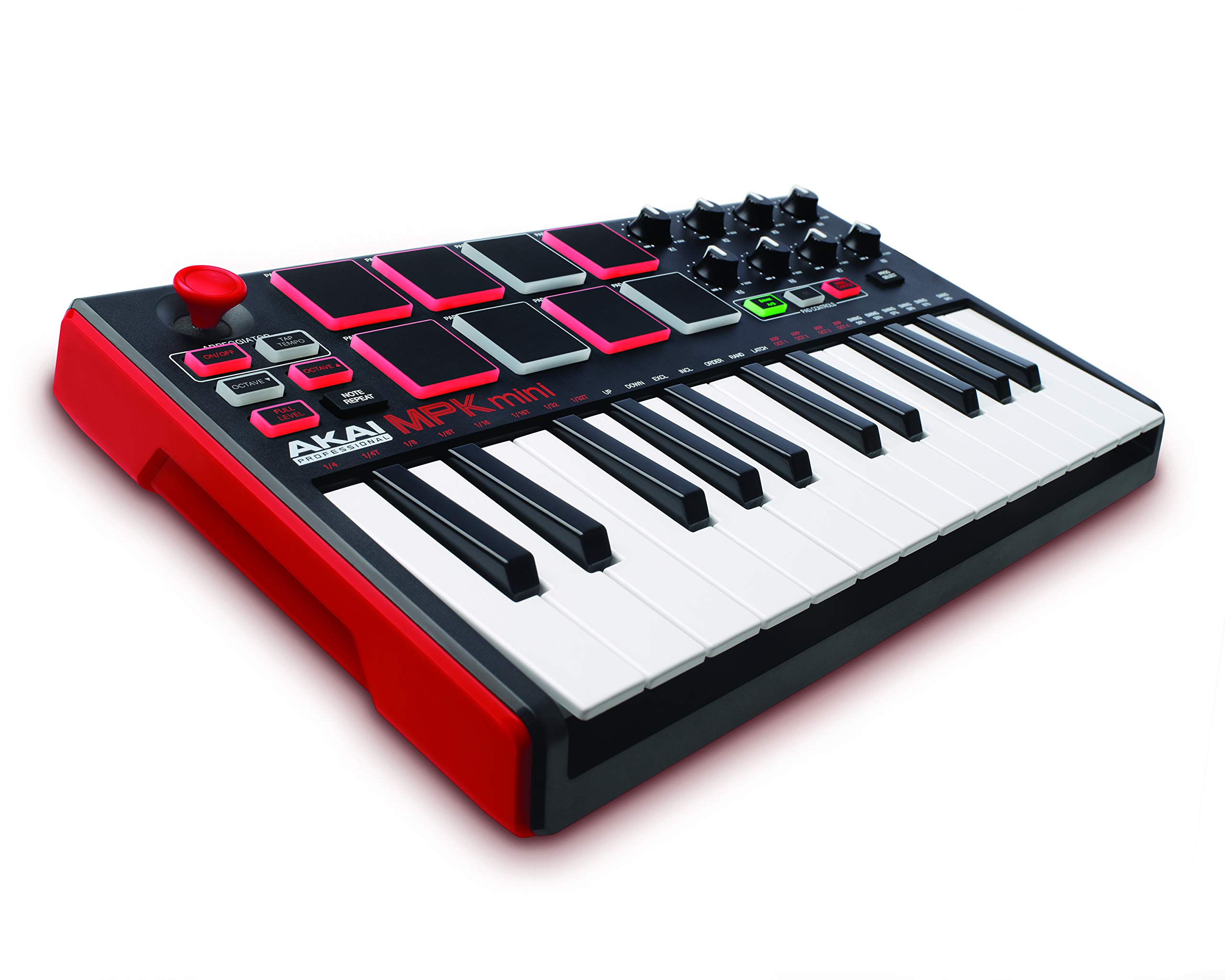Home>Production & Technology>MIDI>How To Use MIDI Keyboard In Ableton
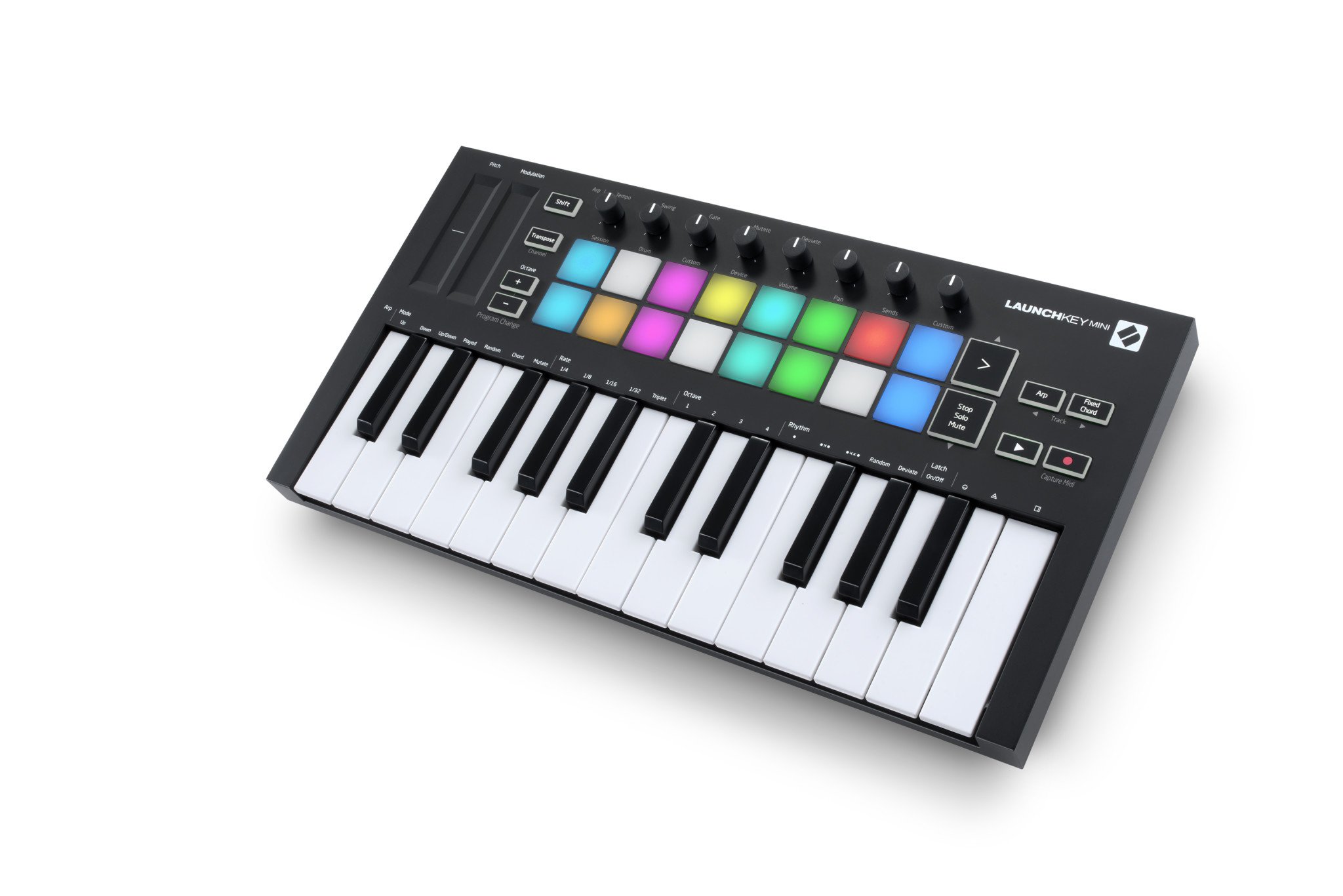

MIDI
How To Use MIDI Keyboard In Ableton
Modified: February 22, 2024
Learn how to use a MIDI keyboard in Ableton to enhance your music production. Discover MIDI tips and tricks for seamless integration with Ableton.
(Many of the links in this article redirect to a specific reviewed product. Your purchase of these products through affiliate links helps to generate commission for AudioLover.com, at no extra cost. Learn more)
Table of Contents
Introduction
Are you ready to unlock the full potential of your musical creativity? If you're a music enthusiast or a professional musician, the MIDI keyboard is a powerful tool that can revolutionize your music production and live performances. In this article, we will delve into the exciting realm of using a MIDI keyboard in conjunction with Ableton Live, a leading digital audio workstation (DAW) known for its versatility and intuitive interface.
The MIDI keyboard, short for Musical Instrument Digital Interface, serves as a bridge between your musical ideas and the digital realm. It allows you to express your musicality in a tangible and dynamic way, offering a hands-on approach to creating melodies, harmonies, and rhythms. When combined with Ableton Live, the possibilities become endless, enabling you to harness the full potential of both hardware and software to craft compelling musical compositions and deliver captivating live performances.
Whether you're a seasoned producer, an aspiring musician, or a live performer, understanding how to effectively use a MIDI keyboard in Ableton Live can significantly elevate your musical endeavors. From setting up your MIDI keyboard to seamlessly integrating it into your production workflow, this article will guide you through the essential steps to unleash the true power of this versatile tool.
Embark on this journey with us as we explore the intricacies of MIDI integration in Ableton Live, uncovering the seamless synergy between hardware and software to enhance your musical prowess. Let's dive into the world of MIDI keyboards and discover how they can serve as a conduit for your artistic expression within the boundless realm of Ableton Live.
Setting Up Your MIDI Keyboard in Ableton
Setting up your MIDI keyboard in Ableton is the pivotal first step toward integrating hardware control into your music production workflow. Whether you're a novice or a seasoned music producer, the process of configuring your MIDI keyboard with Ableton Live is essential for harnessing its full potential. Let's embark on this journey of seamless integration and unleash the power of your MIDI keyboard within the realm of Ableton Live.
1. Connecting Your MIDI Keyboard
The initial step involves physically connecting your MIDI keyboard to your computer. Most MIDI keyboards utilize a USB connection, simplifying the setup process. Once connected, your computer should recognize the MIDI keyboard as a MIDI input device, allowing Ableton Live to communicate with it.
2. Configuring MIDI Settings in Ableton
Upon launching Ableton Live, navigate to the "Preferences" menu and select the "MIDI" tab. Here, you can configure the MIDI settings to ensure that your MIDI keyboard is properly recognized by Ableton Live. Locate your MIDI keyboard in the list of available MIDI input devices and enable both the "Track" and "Remote" options to enable control over Ableton's features.
3. Testing MIDI Input
To verify that your MIDI keyboard is successfully integrated, create a new MIDI track in Ableton Live. Arm the track for recording and press keys on your MIDI keyboard. You should see the MIDI input indicator within Ableton Live respond to your keystrokes, confirming that the MIDI keyboard is transmitting data to the software.
4. Assigning MIDI Controls
Ableton Live offers extensive customization options for mapping MIDI controls to various parameters within the software. By entering MIDI mapping mode, you can assign knobs, sliders, and buttons on your MIDI keyboard to control parameters such as volume, pan, and effects within Ableton Live. This level of customization empowers you to tailor your MIDI keyboard to suit your specific production and performance requirements.
5. Saving Your MIDI Setup
Once you have configured your MIDI keyboard to your liking, it's essential to save your MIDI setup within Ableton Live. This ensures that your MIDI mappings and preferences are retained for future sessions, streamlining your workflow and allowing for a consistent user experience each time you launch Ableton Live.
By following these steps, you can seamlessly integrate your MIDI keyboard into the fabric of Ableton Live, unlocking a world of creative possibilities and tactile control over your music production endeavors. With your MIDI keyboard primed and ready, you're now poised to explore the myriad features and functionalities that Ableton Live has to offer, all at your fingertips.
Mapping MIDI Controls to Ableton Parameters
Once your MIDI keyboard is successfully integrated with Ableton Live, you can delve into the exciting realm of mapping MIDI controls to various parameters within the software. This process empowers you to customize your MIDI keyboard's physical controls, such as knobs, sliders, and buttons, to manipulate and modulate a wide array of parameters within Ableton Live, offering a hands-on and dynamic approach to music production and performance.
1. Entering MIDI Mapping Mode
To begin mapping MIDI controls, enter MIDI mapping mode within Ableton Live. This mode allows you to establish a direct link between the physical controls on your MIDI keyboard and the parameters within Ableton Live, creating a seamless bridge between hardware and software.
2. Selecting Parameters for Mapping
Once in MIDI mapping mode, you can select the parameters within Ableton Live that you wish to control using your MIDI keyboard. This can include parameters such as volume, pan, send levels, device parameters, and even custom mappings within instruments and effects. The flexibility of Ableton Live's MIDI mapping capabilities enables you to tailor your MIDI keyboard to suit your specific production and performance requirements.
3. Assigning MIDI Controls
With the parameters selected, you can now assign specific MIDI controls on your keyboard to manipulate each parameter. This can involve assigning knobs to adjust filter cutoff frequencies, sliders to modulate reverb levels, or buttons to trigger effect parameters. The intuitive nature of MIDI mapping in Ableton Live allows for effortless customization, providing a tactile and expressive means of interacting with your music.
4. Fine-Tuning Control Parameters
Ableton Live offers precise control over the mapping parameters, allowing you to fine-tune the range and behavior of each MIDI control. This level of customization ensures that your MIDI keyboard responds exactly as intended, providing a seamless and intuitive user experience.
5. Saving and Recalling MIDI Mappings
Once you have meticulously mapped your MIDI controls to Ableton Live parameters, it's crucial to save your mappings for future use. This enables you to recall your customized MIDI setup effortlessly, ensuring that your preferred mappings are readily available for subsequent music production sessions and live performances.
By mapping MIDI controls to Ableton Live parameters, you can harness the full potential of your MIDI keyboard, transforming it into a versatile and dynamic tool for shaping and manipulating your musical creations. This hands-on approach to control and expression empowers you to infuse your music with a personalized touch, bringing your creative vision to life with unparalleled precision and fluidity.
Using MIDI Keyboard to Record and Play Virtual Instruments
The integration of a MIDI keyboard with Ableton Live opens up a world of possibilities for recording and playing virtual instruments. This seamless synergy between hardware and software empowers musicians to harness the expressive capabilities of a MIDI keyboard while leveraging the vast array of virtual instruments available within Ableton Live.
1. Recording MIDI Notes
With your MIDI keyboard connected and configured in Ableton Live, you can effortlessly record MIDI notes directly into the software. By creating a new MIDI track and arming it for recording, you can play melodies, harmonies, and rhythms on your MIDI keyboard, capturing your musical ideas as MIDI data within Ableton Live. This intuitive recording process allows for a fluid and dynamic approach to laying down musical phrases, enabling you to capture the nuances of your performance with precision.
2. Playing Virtual Instruments
Ableton Live boasts an extensive collection of virtual instruments, ranging from classic synthesizers to intricate sampled instruments. By utilizing your MIDI keyboard, you can seamlessly play and control these virtual instruments in real time. The tactile nature of the MIDI keyboard facilitates an organic and expressive interaction with virtual instruments, allowing for nuanced dynamics, pitch modulation, and intricate articulations that breathe life into your musical compositions.
3. Expressive Control and Modulation
The integration of a MIDI keyboard with Ableton Live extends beyond mere note input, offering expressive control and modulation capabilities. The velocity-sensitive keys of the MIDI keyboard enable you to imbue your performances with dynamic variations, while the mod-wheel and assignable knobs provide avenues for real-time manipulation of parameters within virtual instruments. This level of expressive control empowers musicians to infuse their performances with emotion and character, transcending the limitations of traditional keyboard input.
4. Layering and Multi-Instrument Performance
With the ability to record and play virtual instruments using a MIDI keyboard, musicians can explore the art of layering multiple instrument tracks to create rich and textured compositions. Whether it's blending orchestral strings with electronic synths or combining traditional pianos with experimental soundscapes, the MIDI keyboard serves as a versatile tool for orchestrating intricate multi-instrument performances, allowing for boundless creativity and sonic exploration within Ableton Live.
By leveraging the capabilities of a MIDI keyboard to record and play virtual instruments in Ableton Live, musicians can unlock a realm of creative expression and musical innovation. The seamless integration of hardware and software empowers artists to transcend traditional boundaries, enabling them to sculpt captivating compositions and deliver compelling performances that resonate with depth and artistry.
Utilizing MIDI Keyboard for Live Performance in Ableton Live
The utilization of a MIDI keyboard for live performance in Ableton Live transcends traditional paradigms, offering musicians an immersive and dynamic platform to showcase their artistic prowess in real time. Whether performing solo or as part of a band, the integration of a MIDI keyboard with Ableton Live empowers artists to deliver captivating and expressive live performances that resonate with depth and creativity.
Seamless Instrument Integration
A notable advantage of using a MIDI keyboard for live performance in Ableton Live is the seamless integration of virtual instruments. With Ableton Live's extensive library of instruments and sound packs, musicians can harness the expressive capabilities of their MIDI keyboard to play and manipulate a diverse array of sonic textures and timbres. From ethereal pads to pulsating synths and intricate melodic phrases, the MIDI keyboard serves as a conduit for translating musical ideas into captivating live performances, offering a versatile palette of sounds at the artist's fingertips.
Dynamic Control and Performance
The tactile nature of a MIDI keyboard lends itself to dynamic control and performance, allowing musicians to infuse their live sets with nuanced expression and emotive gestures. The velocity-sensitive keys enable performers to convey subtle variations in dynamics, while the integration of pitch bend and modulation wheels facilitates real-time manipulation of sound parameters, adding depth and character to each performance. Whether navigating through intricate arpeggios, crafting evolving soundscapes, or delivering impassioned solos, the MIDI keyboard empowers artists to engage their audience with a captivating display of musicality and artistry.
Customizable Mapping and Effects
Ableton Live's robust MIDI mapping capabilities enable artists to customize their MIDI keyboard's controls to seamlessly interact with live performance elements. By mapping knobs, sliders, and buttons to control parameters such as effects, filters, and spatial processors, musicians can sculpt and modulate their sonic landscape in real time, creating immersive and dynamic sonic environments that captivate audiences. This level of customization empowers artists to tailor their MIDI keyboard to suit the specific requirements of each live performance, allowing for fluid transitions, dramatic build-ups, and spontaneous sonic explorations.
Collaborative Potential and Interactivity
In a collaborative live performance setting, the integration of MIDI keyboards with Ableton Live fosters interactivity and synergy among musicians. Whether triggering loops, launching clips, or modulating shared effects, the MIDI keyboard serves as a central hub for interactive improvisation and cohesive musical dialogue. This collaborative potential enables artists to co-create immersive sonic experiences, blurring the lines between composition and live performance, and inviting audiences on a journey of musical discovery and innovation.
Elevating Live Performances with MIDI Keyboards
In essence, the utilization of MIDI keyboards for live performance in Ableton Live transcends traditional paradigms, offering a dynamic and immersive platform for musical expression. By seamlessly integrating virtual instruments, harnessing dynamic control, leveraging customizable mapping and effects, and fostering collaborative potential, MIDI keyboards serve as indispensable tools for elevating live performances to new heights of creativity and artistry within the boundless realm of Ableton Live.


